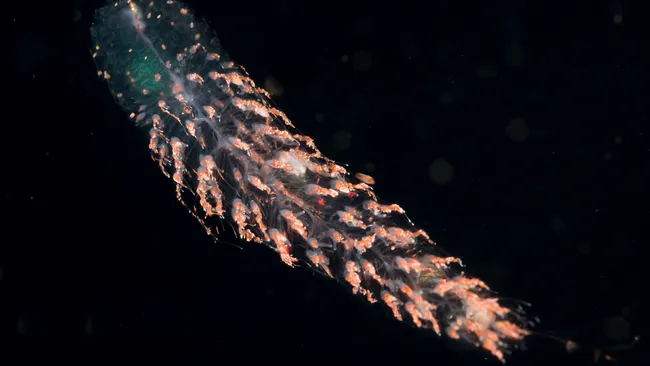Siphonophores are unusual animals made up of individual organisms called “zooids,” which each have a distinct function — despite being genetically identical.
Siphonophores: The Enigmatic Giants of the Deep Sea
Habitat and Distribution
Siphonophores (Siphonophora) inhabit all the world’s oceans, showcasing their adaptability across various marine environments. With approximately 175 known species, these intriguing creatures thrive in the deep sea, though not every species is found in each ocean.
Diet: What Do They Eat?
Siphonophores primarily feed on small crustaceans, copepods, and fish. Their feeding strategies vary among species, with some employing venomous tentacles to immobilize prey before consumption.
The Fascinating Anatomy of Siphonophores
While the largest animal on Earth is often considered to be the blue whale, some siphonophores can grow even longer—reaching lengths of up to 150 feet (46 meters). These creatures may appear as solitary animals, but they are, in fact, complex colonies of genetically identical individuals known as “zooids.” Each zooid has a specific function within the colony, such as catching prey, digesting food, or aiding in reproduction and locomotion.
The colony develops from a single zooid that hatches from a fertilized egg, leading to the growth of new zooids through asexual reproduction. This unique structure means that individual zooids cannot survive independently; they rely on the collective for their existence.
Captivating Feeding Techniques
Siphonophores are adept hunters, feeding on a variety of small marine animals. Species that utilize toxins have specialized zooids equipped with tiny, stinging tentacles that contain incapacitating venom. They capture prey by casting out their tentacles to sting and immobilize it before drawing it into their mouths.
One remarkable instance of siphonophore behavior was observed in 2020 by marine biologists in western Australia, who discovered a massive 150-foot giant siphonophore (Praya dubia) in a “doom spiral,” effectively trapping unsuspecting prey.
Bioluminescence: A Light in the Darkness
Many siphonophores exhibit bioluminescence, generating light through chemical reactions to attract prey. Most species emit blue or green light, but a unique species from the genus Erenna was the first marine invertebrate discovered to emit a red glow. This rare phenomenon occurs because shorter wavelengths, such as blue and green, travel longer distances underwater, providing evolutionary advantages to marine life.
According to a 2005 study published in Science by marine biologist Steven Haddock, this red bioluminescence may lure fish by mimicking the glow from algae in the stomachs of prey like copepods.
Predators and Survival Strategies
Siphonophores face predation from sea turtles and larger fish, yet some species can defend themselves using their stinging tentacles. However, they are also vulnerable to smaller crustaceans known as phronima, or pram bugs, which burrow into siphonophores, often leading to the host’s demise.
Conclusion
Siphonophores are remarkable examples of nature’s ingenuity, showcasing unique adaptations and behaviors that allow them to thrive in the depths of the ocean. Their complex social structure, incredible feeding techniques, and captivating bioluminescence make them a fascinating subject of study for marine biologists and ocean enthusiasts alike.
